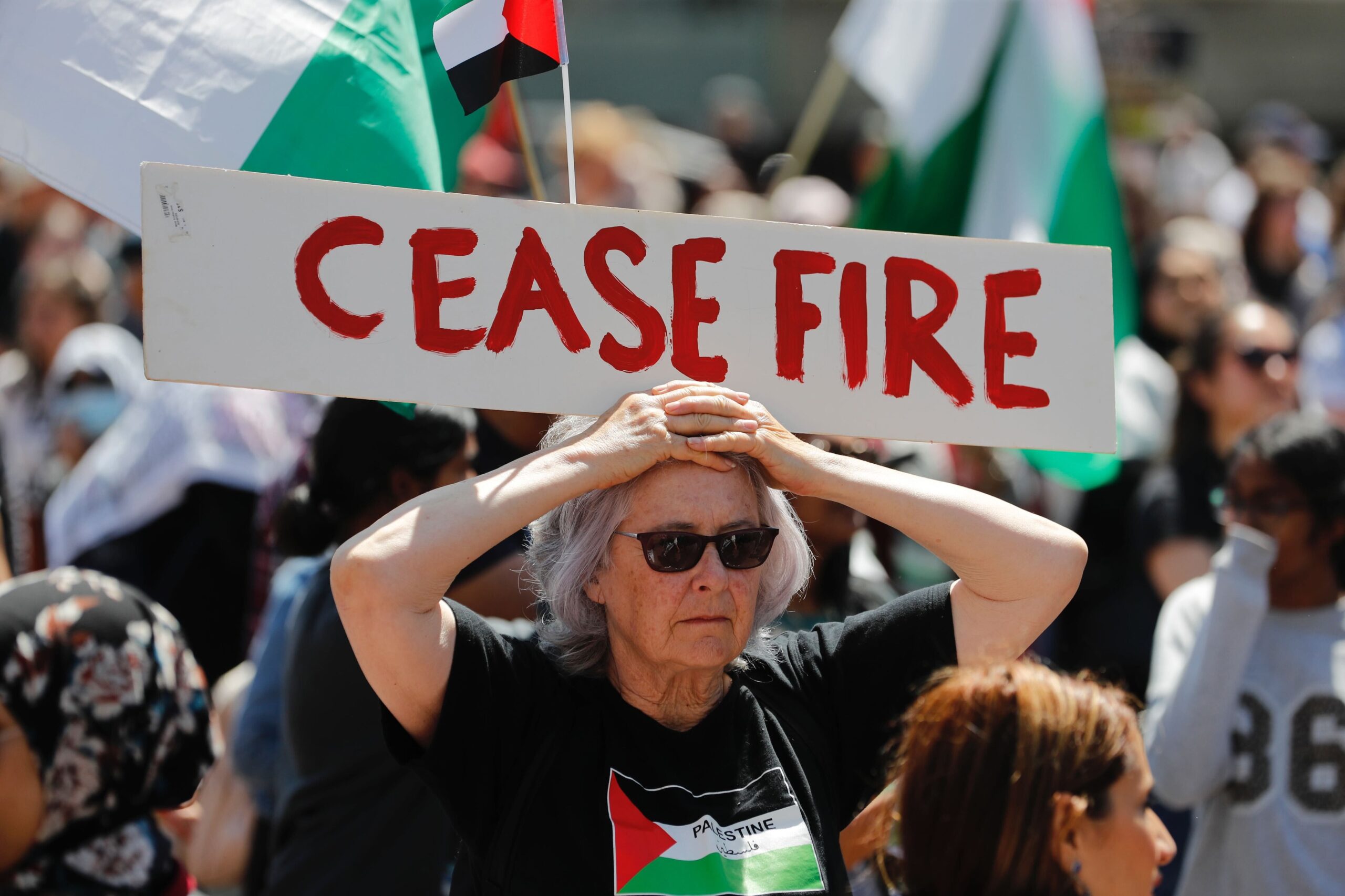Politics
Protesters Challenge Boundaries of Peaceful Demonstration

Recent protests in various countries have highlighted the fine line between peaceful demonstration and intimidation, raising questions about the limits of free expression. In a recent incident, protesters gathered outside the home of a Senior Minister in the UK, prompting a debate on the appropriateness of such actions.
The power of peaceful protest is a cornerstone of democratic societies, providing a platform for individuals to express their beliefs without resorting to violence. In many parts of the world, however, this right is met with harsh repression, stifling voices and suppressing dissent. From the Middle East to Africa and Europe, reports indicate a growing trend of unrest fueled by frustration over various issues.
In the UK, the recent protest that occurred outside the home of a Member of Parliament has sparked significant concern. Demonstrators live-streamed their actions, which some critics argue crossed a line into personal harassment. The Senior Minister, who has a family and a private life, found himself in a situation where his home—a sanctuary for his loved ones—was turned into a stage for public outcry.
Ryan Bridge, a commentator on civil liberties, expressed his disappointment regarding the protest tactics employed. He emphasized the importance of maintaining boundaries during demonstrations. “While it is essential to voice dissent, we must consider the implications of our actions,” he stated. “Protesting outside someone’s home, particularly at night, can be perceived as threatening, regardless of the intention behind it.”
The public reaction to this incident has been mixed. Many support the right to protest but share concerns over the methods used. Critics argue that the visibility of such protests can lead to fear and intimidation, undermining the very principles of democracy that protesters seek to uphold.
Bridge suggests that those who engage in protests should reflect on their methods and the potential consequences. “Protest is a powerful tool for change,” he noted. “However, the question remains: how far are we willing to go, and at what cost?”
With tensions rising in various regions, the need for constructive dialogue is more critical than ever. Protests should serve as a means to foster understanding and debate, rather than sow division or fear. As democratic societies navigate the complexities of free expression, it is vital to balance the right to protest with respect for personal boundaries and safety.
In conclusion, while the ability to protest is a fundamental right, it comes with responsibilities. As citizens continue to express their views, a mindful approach to protest tactics can help ensure that the dialogue remains constructive, ultimately leading to the resolution of differences and the advancement of society as a whole.
-

 World1 week ago
World1 week agoPrivate Funeral Held for Dean Field and His Three Children
-

 Top Stories2 weeks ago
Top Stories2 weeks agoFuneral Planned for Field Siblings After Tragic House Fire
-

 Sports3 months ago
Sports3 months agoNetball New Zealand Stands Down Dame Noeline Taurua for Series
-

 Entertainment3 months ago
Entertainment3 months agoTributes Pour In for Lachlan Rofe, Reality Star, Dead at 47
-

 Entertainment2 months ago
Entertainment2 months agoNew ‘Maverick’ Chaser Joins Beat the Chasers Season Finale
-

 Sports3 months ago
Sports3 months agoSilver Ferns Legend Laura Langman Criticizes Team’s Attitude
-

 Sports4 weeks ago
Sports4 weeks agoEli Katoa Rushed to Hospital After Sideline Incident During Match
-

 World2 weeks ago
World2 weeks agoInvestigation Underway in Tragic Sanson House Fire Involving Family
-

 Politics2 months ago
Politics2 months agoNetball NZ Calls for Respect Amid Dame Taurua’s Standoff
-

 Top Stories2 weeks ago
Top Stories2 weeks agoShock and Grief Follow Tragic Family Deaths in New Zealand
-

 Entertainment3 months ago
Entertainment3 months agoKhloe Kardashian Embraces Innovative Stem Cell Therapy in Mexico
-

 World4 months ago
World4 months agoPolice Arrest Multiple Individuals During Funeral for Zain Taikato-Fox




















